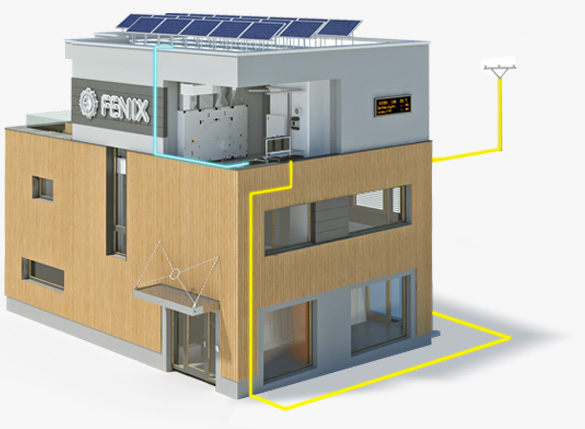FENIX new energy concept
The solution is to combine the energy production from renewable sources with a household battery, electric heating, ventilation and the so-called smart grid. With technical development the properties of batteries are constantly improving and the price is slowly going down. Moreover such batteries offer more solutions. First one is to build island systems - complete or even partial - where users have, for example, photovoltaic panels and produce own elektricity, taking it from batteries only when they really need it. However, energy consumption changes quite significantly during the year, which is why this solution is challenging both the performance of the photovoltaic panels and the capacity of the batteries.
The second and more practical option will be to use batteries in a shared network. One of the big problems in today's energy industry is not a shortage of electricity, but rather short-term surpluses. In the past, not only in our country, large PV power plants were built extensively, and distribution networks thus can be flooded with large doses of electricity in various locations, depending on the weather. Transmission system is struggling converting this energy and there is a certain risk of its collapse. However, if there was a sufficient dense network of consumers with their own batteries, distributor would certainly like to offer them an attractive price for electricity to use this network of batteries to create a "virtual" pumped storage power plant, but with significantly higher energy efficiency. In such case a new tariff for elektricity would be possible, when charging process of customers batteries is controlled by electricity distributor using HDO signal and in exchange for a low price of energy.
It would thus be possible not only to control the charging time of the batteries to accommodate the current excess energy, but also, if necessary, to convert the object to an autonomous state for a short time, when it would not take energy from the network at all. On the contrary, this mechanism could serve to managing energy peaks easier. A significant advantage of the offered solution is a huge increase in an energy security and independence.



